Silk is a filament fiber formed from proteins secreted by Bombyx mori, or silkworms, it is one of the finest yarns available to fabric producers and can be used for some of the most delicate and elegant fabrics or some rustic looks such as silk tweeds made with the shorter filaments. In ancient times, silk was made of natural silk weaving. And now, due to the expansion of modern textile raw materials, every meridian adopted man-made and natural filament fiber of textiles can be called generalized silk. After reading this article, you will get the answer to the development of silk, types of silk fabrics, uses of silk fabric, ways to identify genuine silk and a silk washing guide.
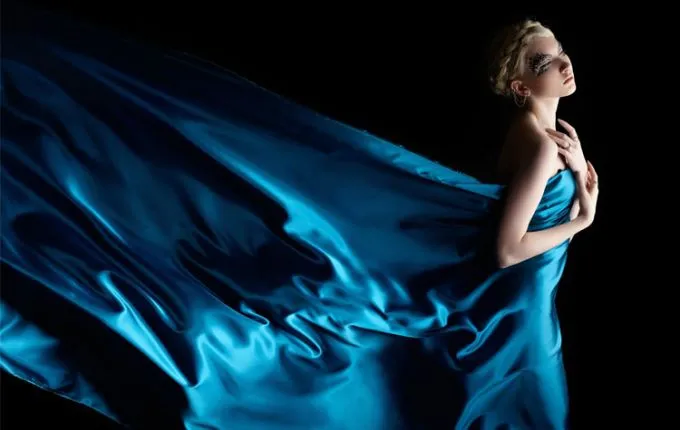
Development of Silk
The production of silk originated in China in the Neolithic (Yangshao culture, 4th millennium BCE). In the Holocene warming period, China's warm climate made mulberry and silkworm breeding develop quickly, then Huangdi's wife Leizu invented "sericulture take silk".
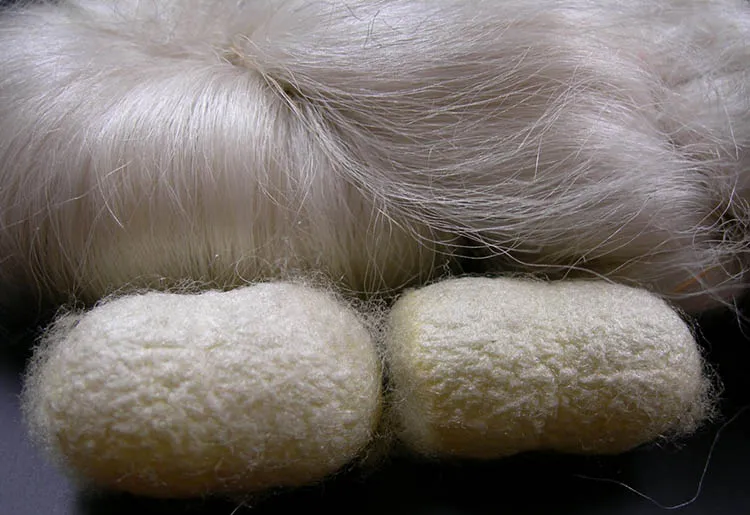
Several thousand years ago, the silk trade first reached Europe via the Silk Road. It brought with it not only gorgeous silk apparel and decorative items. But also the ancient and resplendent culture of the Far East. In the Han dynasty, with the Lingnan sea route connected, silk traveled out to other countries preliminary. And it did not for a scale until the early Tang dynasty. In 1980, people in East Berlin Shilaosike Penick Museum found a Siegburg lion-shaped silk in a forgotten drawer, which has been treasured for centuries. This silk may presented to Otto I for gifts by Constantine VII in public 945. As one can imagine, silk as a product of the East, be specialty of Byzantine, was pondering into delicate and luxurious works used in clothing. Thus it can be seen silk's dominance over the luxury market.

Types of Silk Fabrics
Silk fabric is the strongest natural fabric in the world and is practical for many uses. Silk was discovered in China around 2600 B.C., and China continues to lead the world's silk production, followed by Japan, Brazil, and India. There are many types of silk fabrics, listed below are a few of the more popular ones found in the USA, because the United States is the leading manufacturer of silk products, while France and Italy are the primary manufacturers of silk fabric.
Broadcloth, Habotai
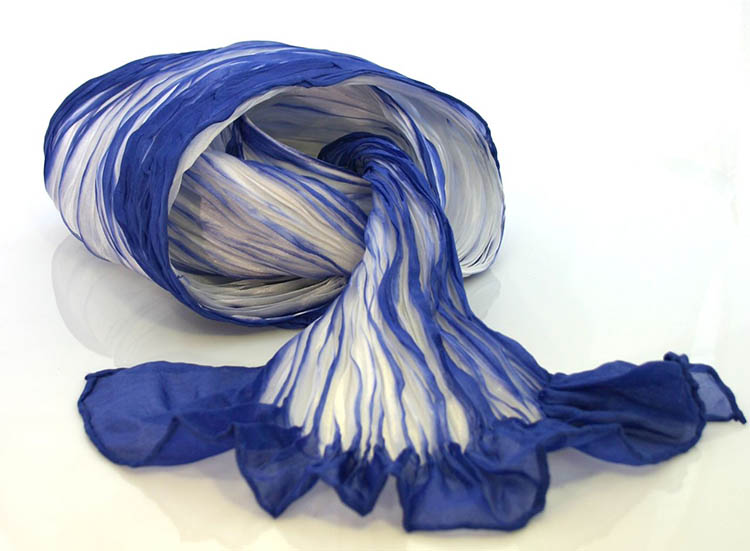
Same as Chinese silk except heavier; wrinkles less; and good for shirts.
Silk Chiffon
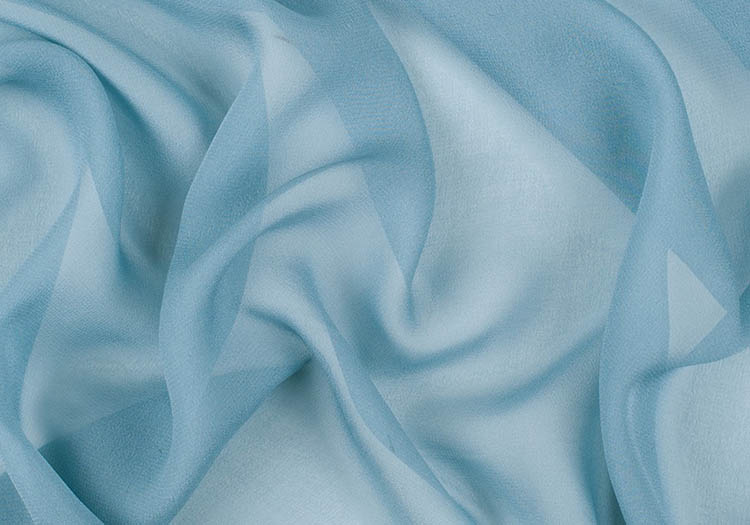
A soft plain wave fabric made with twisted yarns.
China Silk, Fuji Silk
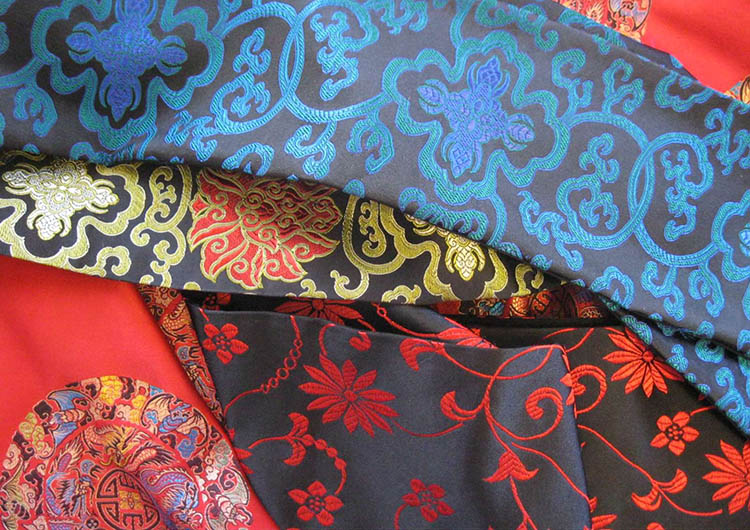
Spun Silk, best for lining and crafts; inexpensive, often called washable silk, wrinkles.
Crepe DE Chine / Silk Crepe
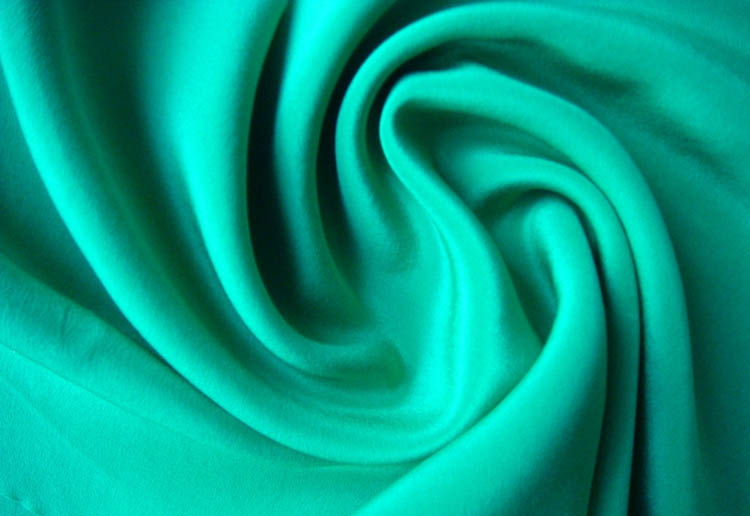
Crepe de chine is mainly characterized in that the surface is homogeneous and fine wrinkles, the texture is soft and smooth, the bright color and soft, and good air permeability. Widely used to making summer clothing.
Organza
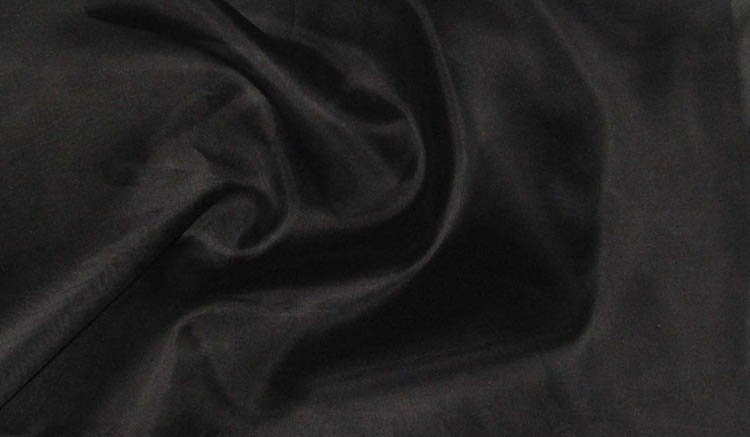
Plain weave; sheer silk made of tightly twisted, fine yarns; used for interfacing, veils, under gowns
Charmeuse
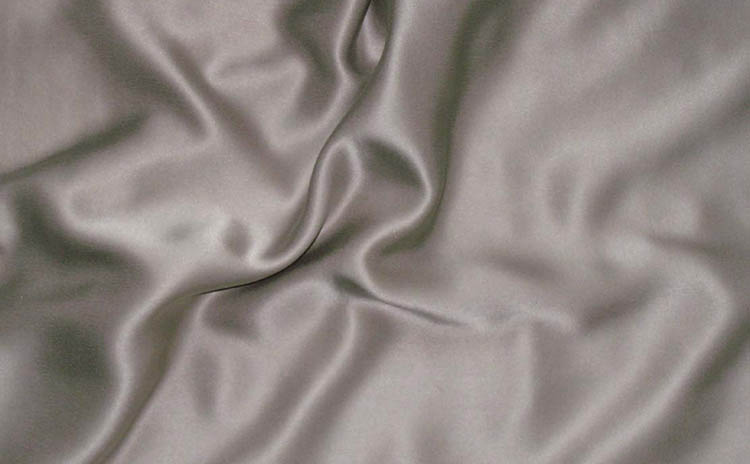
Crepe-backed satin; rich luster; drapes beautifully.
Pongee
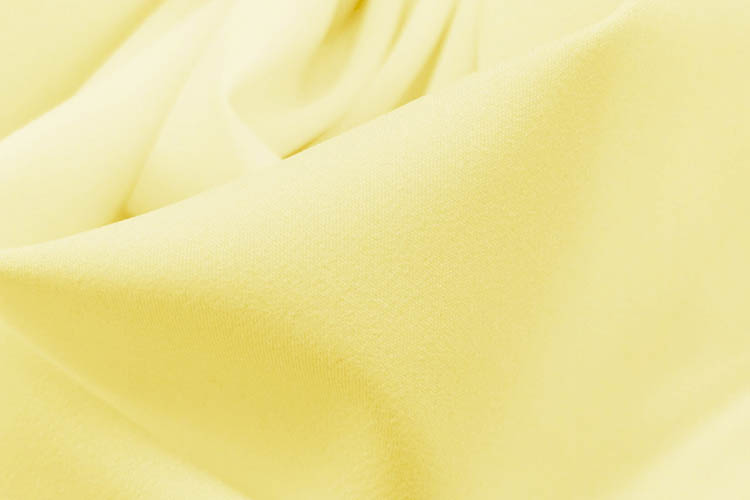
A variation of tussah; slight rib and texture; inexpensive.
Brocade
Jacquard design often with metallic thread, usually contains some rayon; good for jackets.
Taffeta

Taffeta is a crisp, smooth, plain woven fabric made from silk or cuprammonium rayons. The word is Persian in origin and means "twisted woven." It is considered to be a "high-end" fabric, suitable for use in ball gowns, wedding dresses, and interiors for curtains or wallcovering. It is also widely used in the manufacture of corsets and corsetry: it yields a more starched-like type of cloth that holds its shape better than many other fabrics. An extremely thin, crisp type of taffeta is called paper taffeta.
There are two distinct types of silk taffeta: yarn-dyed and piece-dyed. Piece-dyed taffeta is often used in linings and is quite soft. Yarn-dyed taffeta is much stiffer and is often used in evening dresses. Shot silk taffeta was one of the most sought-after forms of Byzantine silk, and may have been the fabric known as purpura.
Shantung
Shantung slubbed silk, dupioni yarns.
Velvet
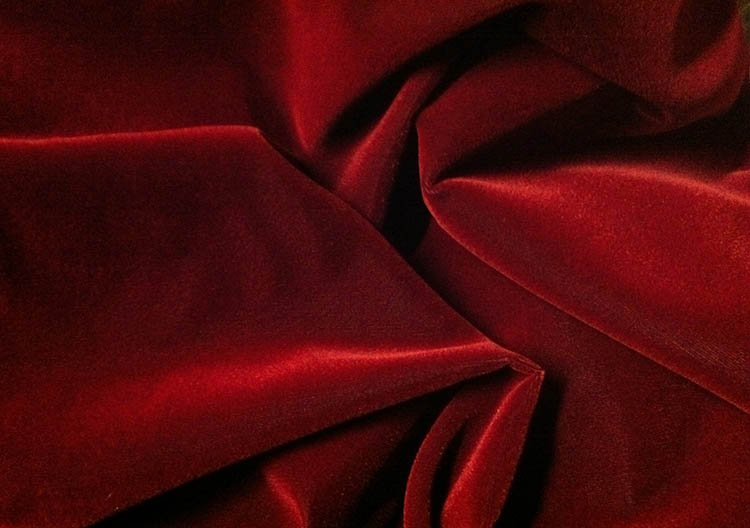
Pile fabric often contains some rayon; a gorgeous drape.
Peu de Soie
Skin of silk; satiny face.
Damask
Jacquard woven silk of elaborate patterns.
Noil (raw silk)
Spun silk with nubby texture; the appearance of soft cotton or wool; easy care, wrinkle resistant; travel well.
Tussah (wild silk)
Wild silk, generally from India, is loosely woven.
Dupioni
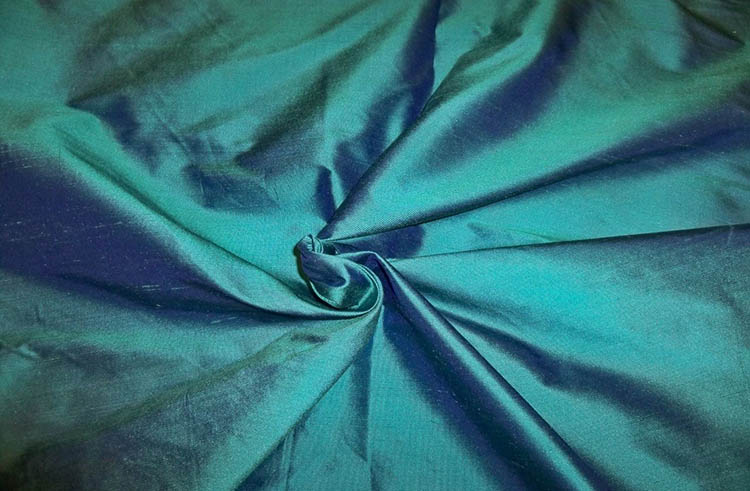
Dupioni (also referred to as Douppioni or Dupion) is a plain weave crisp type of silk fabric, produced by using fine thread in the warp and uneven thread reeled from two or more entangled cocoons in the weft. This creates tightly woven yardage with a highly lustrous surface. Dupioni is popular in bridal and other formal wear. It is suitable for upholstery, but if it is crafted into a curtain or drape, a substantial underlining must be used to protect the fabric from sunlight. Dupioni is often woven with differing colors of threads scattered through the warp and weft. This technique gives the fabric an iridescent effect, similar to but not as pronounced as shot silk taffeta. Dupioni can be woven into plaid and striped patterns; floral or other intrinsic, intricate designs are better suited for lighter-weight silks and/or those with smoother finishes, although dupioni may be embroidered in any manner desired.
Shot Silk
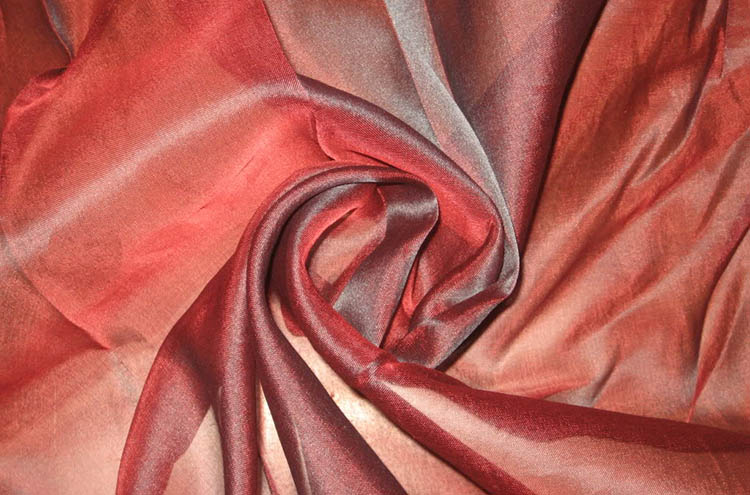
Shot silk (also called change, changeable silk, and changeable taffeta) is a fabric that is made up of silk woven from warp and weft yarns of two or more colors producing an iridescent appearance. A "shot" is a single throw of the bobbin that carries the weft thread through the warp, and shot silk colors can be described as "[warp color] shot with [weft color]." The weaving technique can also be applied to other fibers such as cotton, linen, and synthetics.
Georgette

Georgette (from crêpe Georgette) is a sheer, lightweight, dull-finished crêpe fabric named after the early 20th-century French dressmaker Georgette de la Plante. Originally made from silk, Georgette is made with highly twisted yarns. Its characteristic crinkly surface is created by alternating S- and Z-twist yarns in both warp and weft. Georgette is made in solid colors and prints and is used for blouses, dresses, evening gowns, saris, and trimmings. It is springier and less lustrous than the closely related chiffon.
Uses of Silk Fabric
Because of its strength, beauty, and luxurious feel, silk fabric is used for many different things. Women's Clothing: Silk fabric is used for many different types of women’s dresses, including wedding gowns, evening gowns, and sarongs. In addition, silk can be used to make dress shirts, skirts, or scarves.



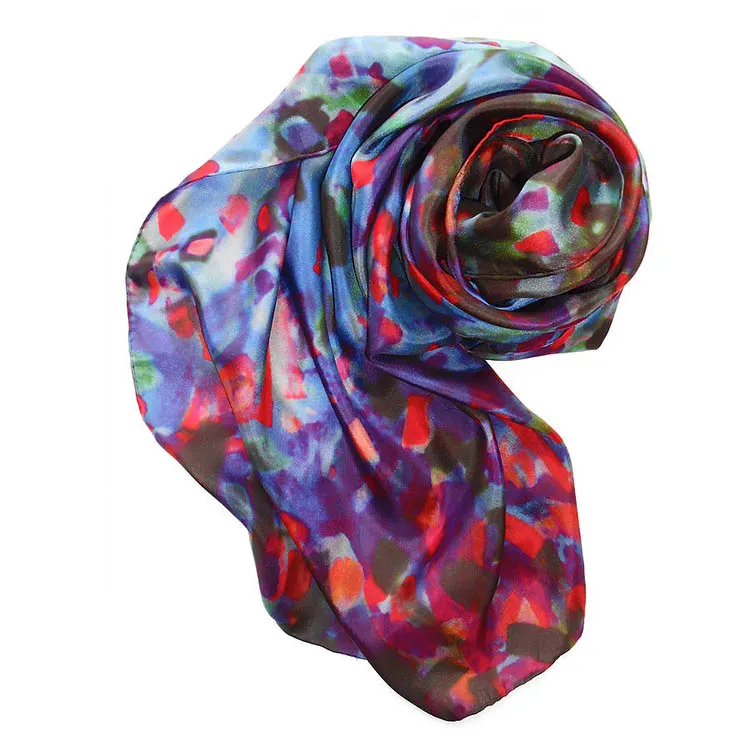
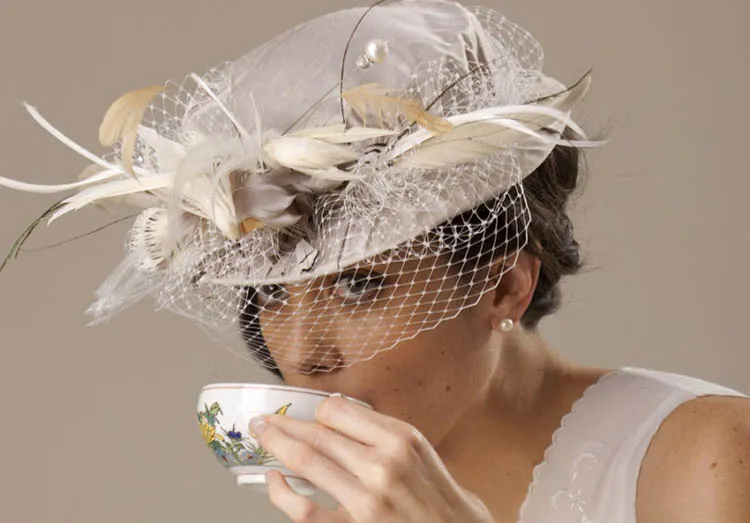
Men’s clothing: Dress shirts and suits. Ties can also be made from silk fabric, as well as pocket squares for the pocket on suit jackets.
Home Furnishings: Many home items are made with silk fabric, including sheets, pillowcases, tablecloths, and throw covers. Silk fabric may also be used for draperies and occasionally as a high-end wall covering.
How to Wash Silk
Some silk fabrics actually look better when washed, as dry cleaning can sometimes cause a garment to look dull. Silk fabrics typically soften when washed. If you want your silk to stay crisp, consider dry cleaning. Dry cleaning for silk fabric projects using intense colors should be considered even if all the fabrics used are known to be washable. Dry-cleaned silk fabrics can and will shrink. As with washing, purchase additional yardage and pre-treat prior to cutting out. With some projects, all the components may be washable including the fabric, interfacing, buttons, and embellishments. However, if you have any concerns about the silk colors bleeding, the completed garment should be dry cleaned.
Launder silk fabric in a mild detergent or soap and avoid the use of harsh bleach and chemicals. Avoid excessive twisting, and wrinkling unless you are attempting to build in texture. Test your washing process on a swatch to determine if you prefer hand washing to machine washing. Rinse your silk fabric twice. In the first rinse add a small amount (¼ cup per gallon) of white vinegar to remove soap residue. The second rinse will remove the vinegar leaving your silk delightfully fresh. When laundering the completed garment, you may consider machine-drying your silk fabric. If you do, remove it from the dryer while still slightly damp. Arrange on a hanger, smoothing as much as possible. This will reduce the amount of pressing needed. You may wish to press the garment while slightly damp.

